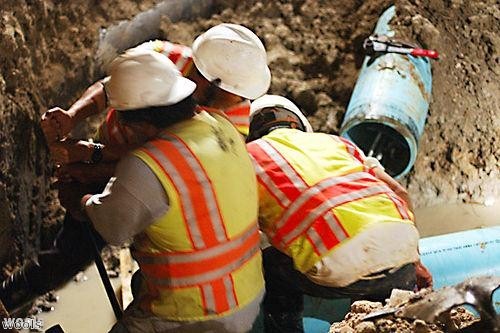Flexible visas 'key' to meeting construction demand
- Details
- Created on Thursday, 02 August 2012 17:15
- Written by Editorial staff

Australia's skilled migration program needs to be "well calibrated" to tackle the short-term demand for labourers in the construction sector, Chris Bowen asserted in a speech today (August 2).
Addressing the Australian Mines and Metals Migration and Labour Sourcing Conference in Brisbane, the immigration minister explained that the 457 visa program is playing an increasingly important role when it comes to filling skills gaps - particularly in the construction sector.
In the past 12 months alone, he said, the number of 457 visa holders entering the mining industry has risen to 6,500, up from 3,650 a year ago - representing an increase of 77 per cent.
The construction sector has experienced similar growth, with the number of industry-related 457 visas jumping by 55 per cent.
And in spite of the rapid growth in numbers, processing times for temporary skilled migration visas have improved significantly.
Migration agents will want to take note of the latest figures when preparing 457 visa applications - Bowen revealed that the median processing time for 457 visas now stands at 16 days, while the fast-tracked applications for the resources sector are averaging a median of 13 days.
In total, Bowen revealed that there are now more than 90,000 primary 457 visa holders in the country - and this figure does not take into account secondary applicants, including dependent children and partners or spouses.
And with an expected 287,000 new construction jobs related to the resources sector set to be created between now and 2018, it is essential for Australia to continue to get its migration strategy right.
"The temporary skilled migration program is assisting industry to obtain the skills it needs, where and when it needs them," Bowen said, adding that the bulk of the 457s related to the resources sector are coming from the mining-rich states of Western Australia and Queensland.
Accelerating visa processing times - which are approximately 60 per cent faster than they were in 2007-08 - is just one step, however, to addressing the ongoing flexible needs of these sectors.
Bowen also pointed to the labour agreement program, the relatively recent launch of Enterprise Migration agreement and continued efforts to equip local Australians with the skills they need for success in the mining and construction industries as having essential roles to play in the process of addressing gaps in the workforce.
News Archive
- 2014
- 2013
- December (21)
- November (29)
- October (21)
- September (20)
- August (22)
- July (21)
- June (20)
- May (23)
- April (22)
- March (27)
- February (19)
- January (20)
- 2012
- December (14)
- November (17)
- October (20)
- September (16)
- August (23)
- July (21)
- June (18)
- May (22)
- April (18)
- March (20)
- February (18)
- January (19)
- 2011






